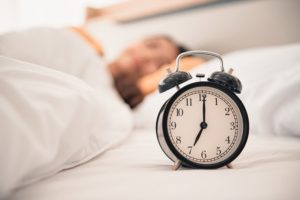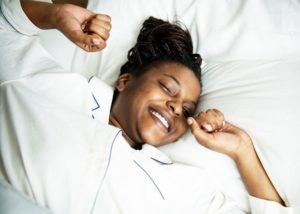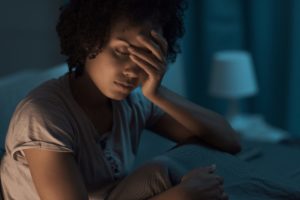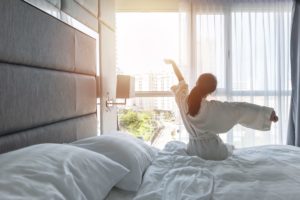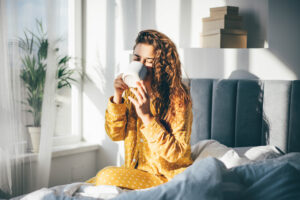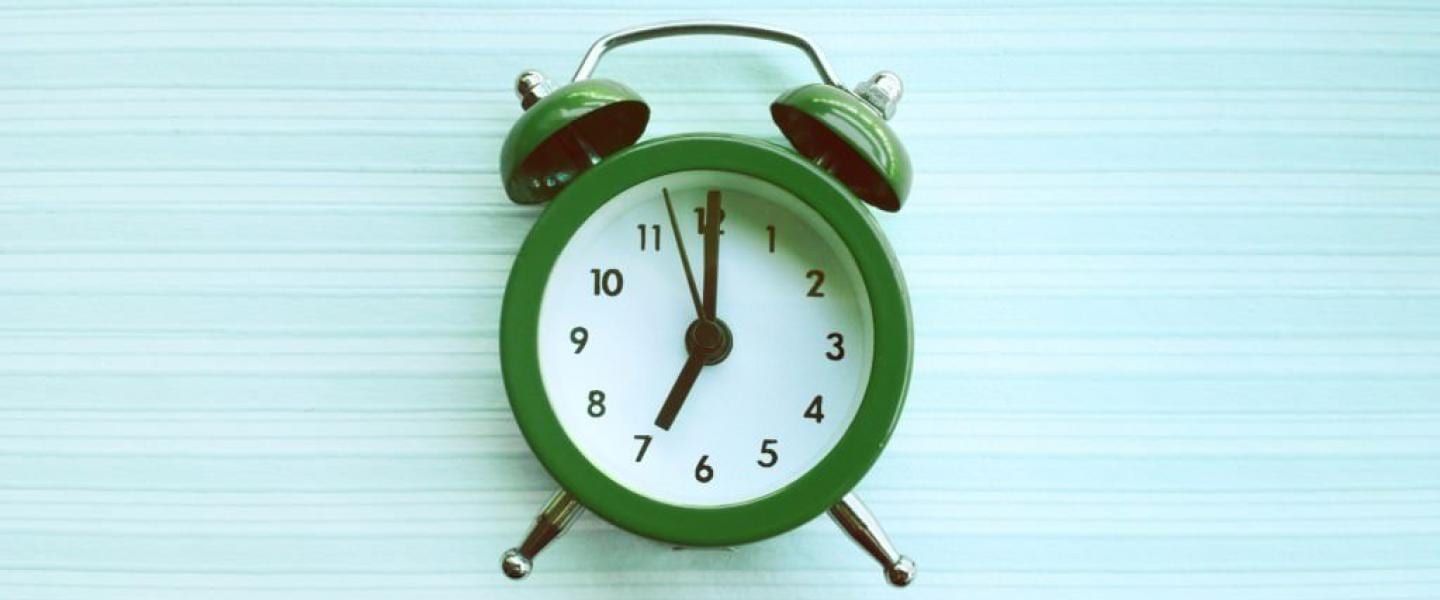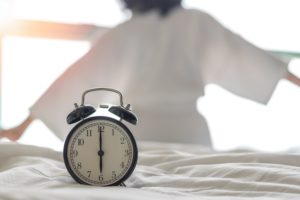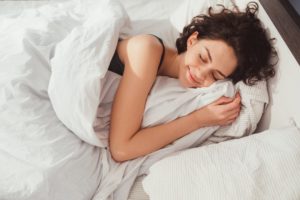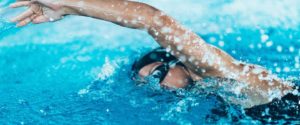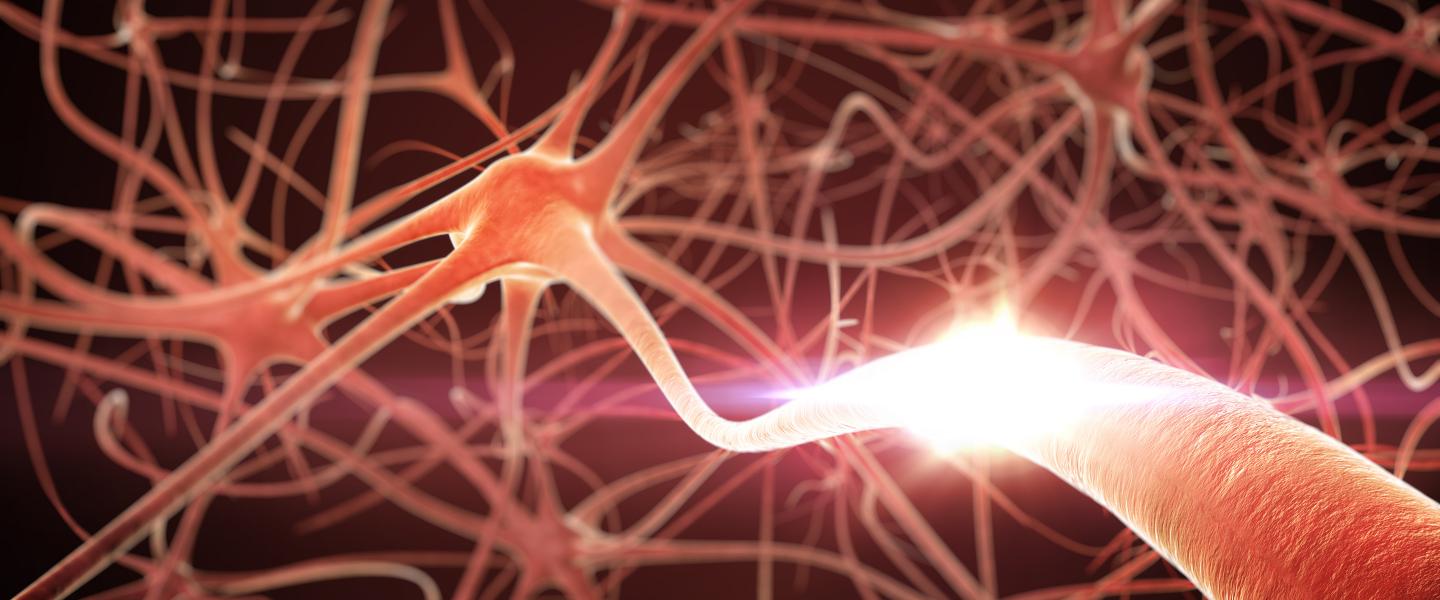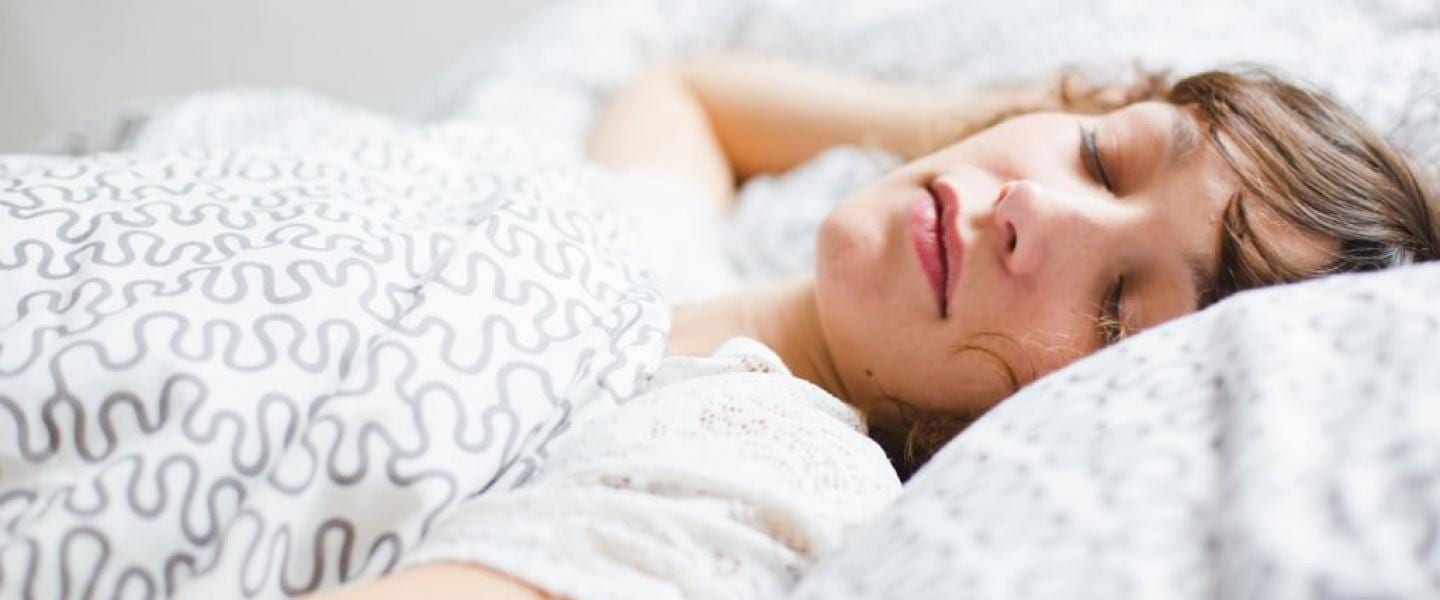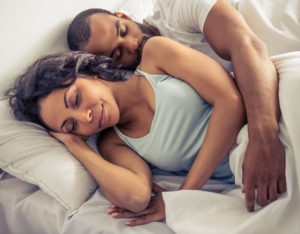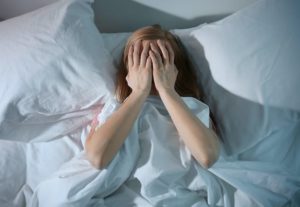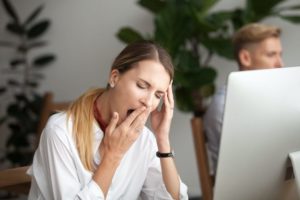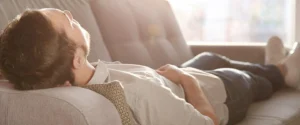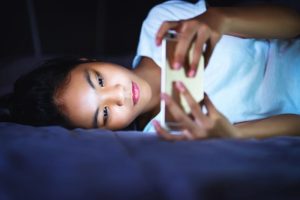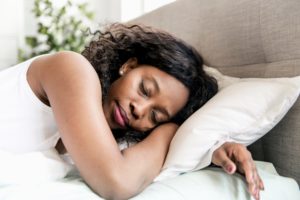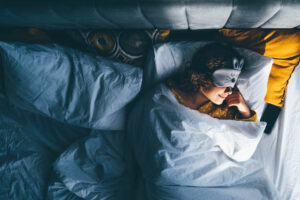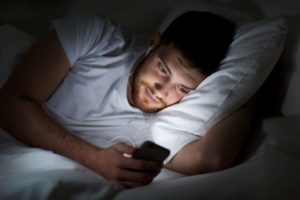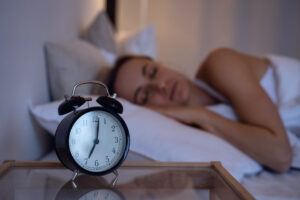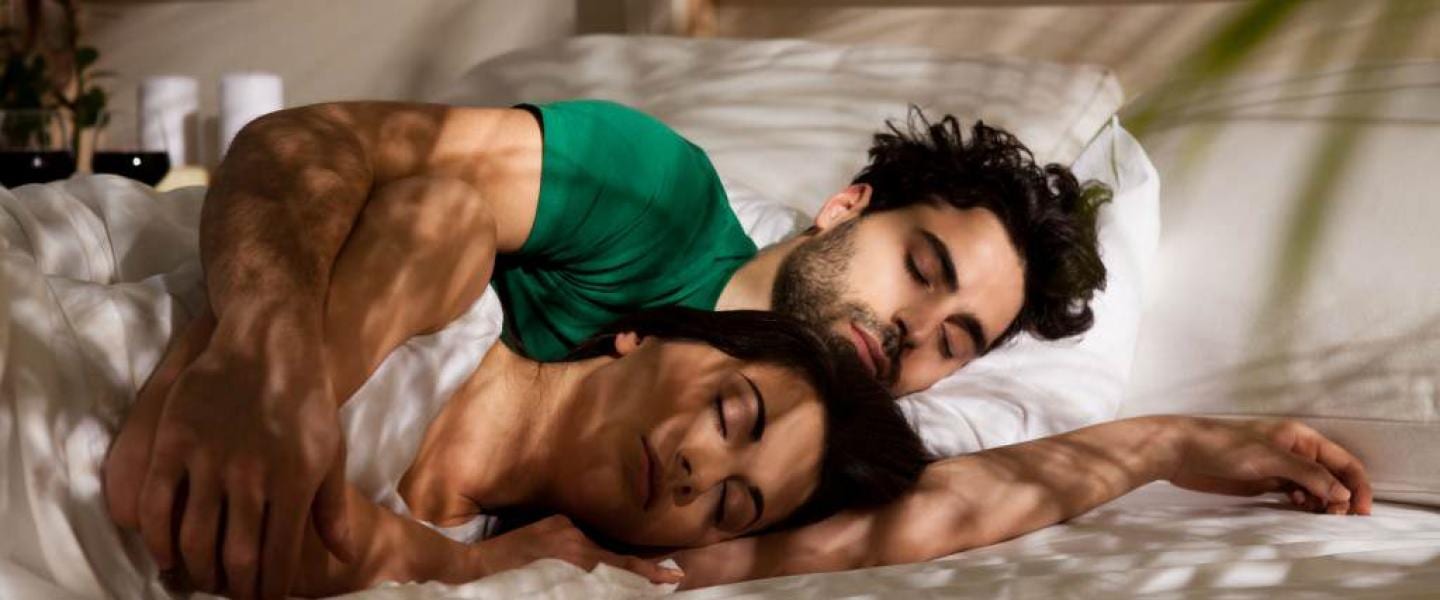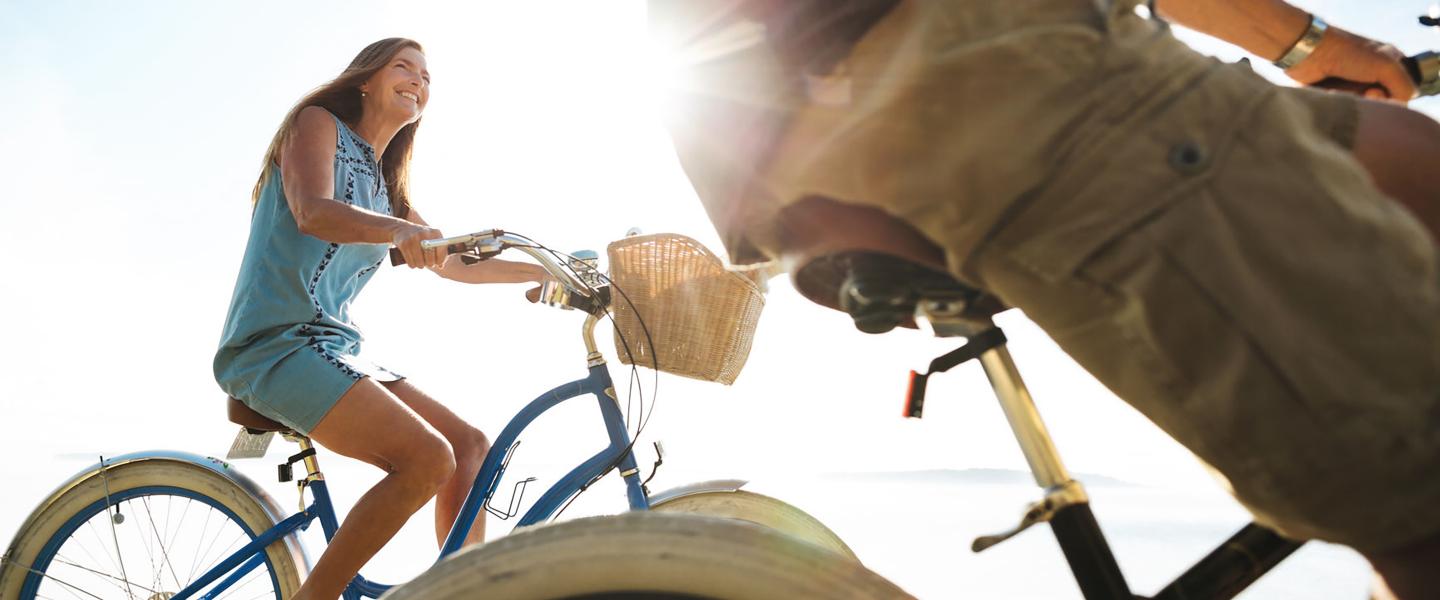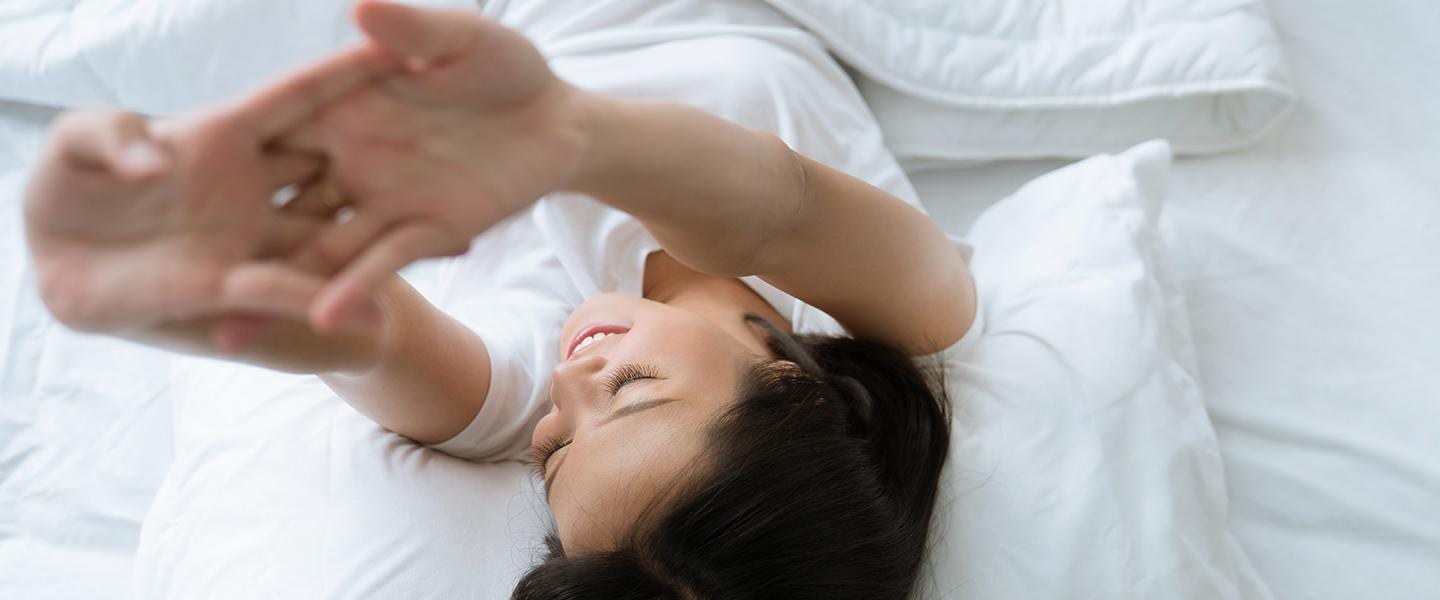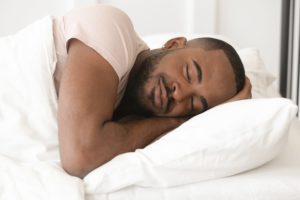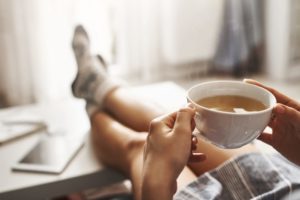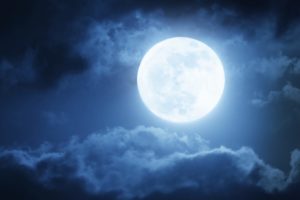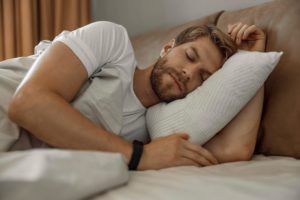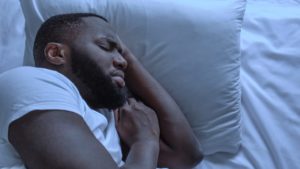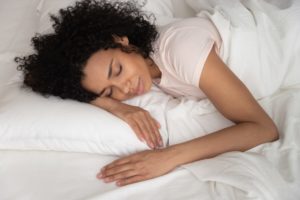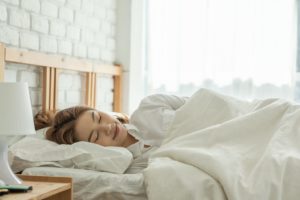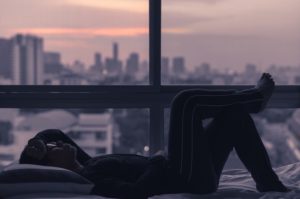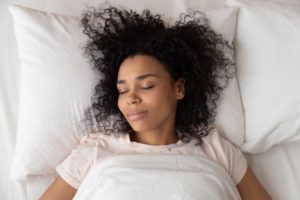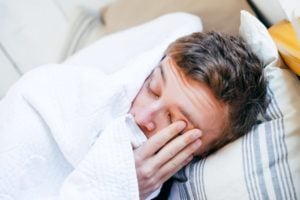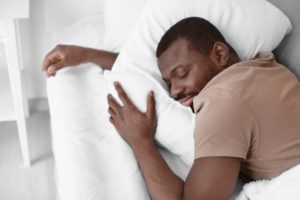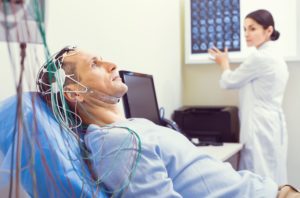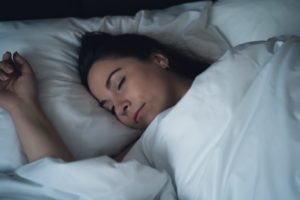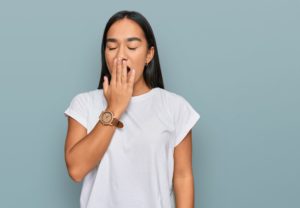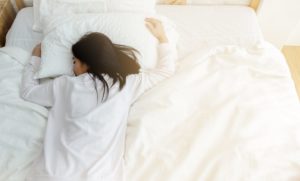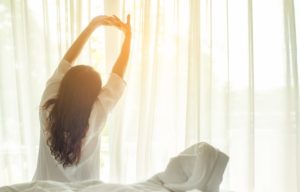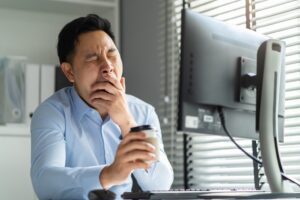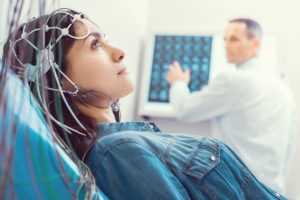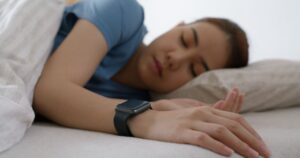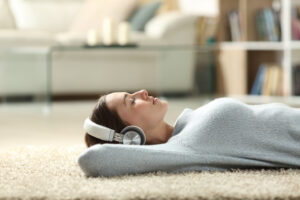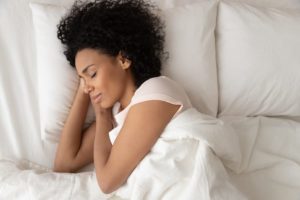When you buy through our links, we may earn a commission. Products or services may be offered by an affiliated entity. Learn more.
Microsleep: What Is It, What Causes It, and Is It Safe?
The term microsleep refers to very short periods of sleep that can be measured in seconds, rather than minutes or hours. Even if you are not familiar with the words microsleep or micro napping, you have likely experienced this phenomenon or witnessed someone else experience it. A person might nod off during microsleep or keep their eyes open and continue to look awake. Regardless of how someone appears during a microsleep episode, their brain is not processing external information like usual.
Microsleeps are most likely to occur after sleep deprivation. Because of this, many people with sleep disorders, such as shift work disorder or obstructive sleep apnea, experience microsleeps. People who do not have sleep disorders can experience microsleeps, too, even after a single night of restricted sleep or no sleep deprivation at all. Microsleep commonly occurs when people are performing monotonous tasks, such as driving on an empty highway.
Because microsleep can happen to anyone and have serious consequences, such as a potentially increased risk of car crashes, it is important to learn exactly what microsleep is, how it affects people, and how to manage it.
What Is Microsleep?
Researchers generally define microsleep as sleep episodes that last for 15 seconds or less . During a microsleep episode, people lose conscious control of their performance. Scientists are working to better understand what occurs in the brain during microsleep by studying the phenomenon in both humans and animals .
Microsleep is sometimes referred to as behavioral microsleep because it is characterized by changes in behavior. Microsleep episodes can look different from person to person, but they are often identified by a person briefly closing their eyes or experiencing lapses in attention. Researchers can detect microsleeps by measuring brain activity, by observing a person’s face and body, or by testing their psychomotor performance.
During a microsleep episode, brain waves measured by an electroencephalogram (EEG) noticeably slow down. Brain scans conducted using functional magnetic resonance imaging (fMRI) show that microsleep involves brain activity that differs from that found in regular sleep. During microsleep, much of the brain that becomes deactivated during sleep remains activated, including areas of the brain dedicated to staying awake.
The brain also responds differently to sound during microsleep than it does during wakefulness or sleep. The brain has a reaction in response to sounds during microsleep, but not the same pattern of reaction found while a person is awake. For example, during microsleep, the brain does not appear to differentiate between sounds of different pitches.
More research is needed to understand all of the ways microsleep differs from sleep and wakefulness and why we engage in microsleep.
Symptoms of Microsleep
One of the most common symptoms of microsleep is partially or fully closing your eyes, though microsleep can also happen with eyes open . Another common symptom of microsleep is a nodding head. You might assume you would know if you experienced a microsleep episode, but they are not always obvious. People who experience microsleep do not always recognize that they briefly fell asleep.
Instead of recognizing that you fell asleep, you might think you briefly stopped paying attention to whatever was around you. During a microsleep episode, people show a reduced response to external stimuli, such as sound or visual cues.
Researchers have found that people tend to move their eyes more slowly in the moments leading up to microsleep. However, you might not be aware that you are moving your eyes more slowly, or that your eyelids are drooping. Pupil dilation is another factor that can indicate microsleep.
Through eye tracking tools and facial videos, machine learning can identify changes that indicate a person is experiencing or about to experience microsleep. Because microsleeps often occur when people are sleepy, driver monitoring systems may look for blinking, changes in heart rate, and steering wheel movements to detect sleepiness in drivers before they have a chance to fall asleep at the wheel.
Risks of Microsleep
The primary risks of microsleep are accidents that could occur while driving, operating heavy machinery, performing surgery, or other similarly sensitive tasks. In a study involving simulated driving , microsleep episodes were associated with a decrease in driving performance. Since microsleep makes people briefly less responsive or unresponsive to stimuli, any high-stakes situation that requires quick reaction times becomes risky when a person microsleeps.
Experiencing microsleep likely does not do any physical harm in and of itself. If you experience microsleep in a safe environment — one in which a brief loss of attention does not carry potentially significant consequences — then the microsleep should not be a problem.
Further research is needed to determine if experiencing microsleep is a risk factor for sleep disorders. Currently, medical professionals do not use microsleep occurrences as a diagnostic criterion. However, research shows that identifying microsleep during a multiple sleep latency test (MSLT) can help professionals more accurately diagnose excessive daytime sleepiness . The MSLT is commonly used to diagnose narcolepsy and idiopathic hypersomnia, two disorders characterized by sleepiness.
Causes of Microsleep
The primary causes of microsleep are sleepiness and sleep deprivation . Sleep disorders that cause sleep deprivation or excessive sleepiness seem most likely to be connected to microsleep. More research is needed to make definitive conclusions about the relationships between sleep disorders and microsleep.
People with shift work sleep disorder might be particularly interested in microsleep research, since this group is nearly three times as likely to experience a car crash. Those who experience insomnia and obstructive sleep apnea are also more likely to experience car crashes. Further research may indicate this increased risk is partially due to microsleep episodes.
People who are fully rested can also experience microsleep, for example while doing something repetitive or tedious. Experiencing microsleep does not necessarily indicate that you are sleep deprived or have an underlying sleep disorder.
Microsleep Treatment
Currently, there is no universal treatment recommended for microsleep, nor is microsleep identified as a sleep disorder or among the diagnostic criteria for any sleep disorder. Since microsleep is related to sleep deprivation and sleepiness, receiving adequate sleep could potentially help.
Wakefulness-promoting medications may help reduce microsleep episodes, but these should be taken with caution and always in consultation with your doctor. With a view to reducing road traffic accidents, some companies are investigating the use of acoustic signals to reduce microsleeps while driving .
If you believe you are experiencing microsleep episodes often or despite receiving adequate sleep, consider talking to your doctor.
When Does Microsleep Occur?
Microsleep can occur at any time a person is awake. It is more likely to occur after sleep deprivation, but it can occur even when a person is fully rested. People experience more microsleep episodes when they are sleepier, even if they are not consciously aware of their sleepiness.
Although more research is needed, some researchers are finding that microsleep occurs more frequently in the afternoon , even if people do not report feeling sleepy. This finding could be due to our circadian rhythms. Many people experience an increase in sleepiness in the early afternoon, sometimes called an afternoon slump or post-lunch dip. By contrast, night shift workers commonly experience drowsiness while driving during the morning commute home.
Catching up on sleep can reduce the occurrence of microsleeps. You may also want to refrain from taking sleep-promoting medication before doing activities that require concentration.
When to Talk to Your Doctor
Many people experience episodes of microsleep as a natural consequence of staying up late one night. Although they are not a substitute for proper sleep, microsleeps may lead to a brief improvement in performance . However, it is important to talk to your doctor if you think your microsleep episodes might be due to a sleep disorder.
If you find yourself having trouble receiving the recommended seven or more hours of sleep each night or experiencing excessive daytime sleepiness, make an appointment with your doctor. They can help you identify and work to treat any underlying sleep disorders or other medical issues contributing to your sleep problems.

Still have questions? Ask our community!
Join our Sleep Care Community — a trusted hub of product specialists, sleep health professionals, and people just like you. Whether you’re searching for the perfect mattress or need expert sleep advice, we’ve got you covered. Get personalized guidance from the experts who know sleep best.
References
18 Sources
-
Skorucak, J., Hertig-Godeschalk, A., Schreier, D. R., Malafeev, A., Mathis, J., & Anchermann, P. (2020). Automatic detection of microsleep episodes with feature-based machine learning. Sleep, 43(1), zsz225.
https://pubmed.ncbi.nlm.nih.gov/31559424/ -
Vyazovskiy, V. V., Olcese, U., Hanlon, E. C., Nir, Y., Cirelli, C., & Tononi, G. (2011). Local sleep in awake rats. Nature, 472, 443–447.
https://pubmed.ncbi.nlm.nih.gov/21525926/ -
Hertig-Godeschalk, A., Skorucak, J., Malafeev, A., Achermann, P., Mathis, J., & Schreier. (2020). Microsleep episodes in the borderland between wakefulness and sleep. Sleep, 43(1), zsz163.
https://pubmed.ncbi.nlm.nih.gov/31328230/ -
Poudel, G. R., Innes, C. R., Bones, P. J., Watts, R., & Jones, R. D. (2014). Losing the struggle to stay awake: divergent thalamic and cortical activity during microsleeps. Human brain mapping, 35(1), 257–269.
https://pubmed.ncbi.nlm.nih.gov/23008180/ -
Maccora, J., Manousakis, J. E., & Anderson, C. (2019). Pupillary instability as an accurate, objective marker of alertness failure and performance impairment. Journal of sleep research, 28(2), e12739.
https://pubmed.ncbi.nlm.nih.gov/30062813/ -
Hidalgo-Gadea, G., Kreuder, A., Krajewski, J., & Vorstius, C. (2021). Towards better microsleep predictions in fatigued drivers: Exploring benefits of personality traits and IQ. Ergonomics, 64(6), 778–792.
https://pubmed.ncbi.nlm.nih.gov/33538641/ -
Skorucak, J., Hertig-Godeschalk, A., Achermann, P., Mathis, J., & Schreier, D. R. (2020). Automatically detected microsleep episodes in the fitness-to-drive assessment. Frontiers in Neuroscience, 14, 8.
https://pubmed.ncbi.nlm.nih.gov/32038155/ -
Tirunahari, V. L., Zaidi, S. A., Sharma, R., Skurnick, J., & Ashtyani, H. (2003). Microsleep and sleepiness: A comparison of multiple sleep latency test and scoring of microsleep as a diagnostic test for excessive daytime sleepiness. Sleep Medicine, 4(1), 63–67.
https://pubmed.ncbi.nlm.nih.gov/14592362/ -
Innes, C. R., Poudel, G. R., & Jones, R. D. (2013). Efficient and regular patterns of nighttime sleep are related to increased vulnerability to microsleeps following a single night of sleep restriction. Chronobiology International, 30(9), 1187–1196.
https://pubmed.ncbi.nlm.nih.gov/23998288/ -
Bharadway, N., Edara, P., & Sun, C. (2021). Sleep disorders and risk of traffic crashes: A naturalistic driving study analysis. Safety Science, 140, 105295.
https://www.sciencedirect.com/science/article/pii/S0925753521001405 -
Morrone, E., D’Artavilla Lupo, N., Trentin, R., Pizza, F., Risi, I., Arcovio, S., & Fanfulla, F. (2020). Microsleep as a marker of sleepiness in obstructive sleep apnea patients. Journal of Sleep Research, 29(2), e12882.
https://pubmed.ncbi.nlm.nih.gov/31180173/ -
Moessinger, M., Stürmer, R., & Mühlensiep, M. (2021). Auditive beta stimulation as a countermeasure against driver fatigue. PloS One, 16(1), e0245251.
https://pubmed.ncbi.nlm.nih.gov/33428673/ -
Dawson, D., Reynolds, A. C., Van Dongen, H., & Thomas, M. (2018). Determining the likelihood that fatigue was present in a road accident: A theoretical review and suggested accident taxonomy. Sleep Medicine Reviews, 42, 202–210
https://pubmed.ncbi.nlm.nih.gov/30274744/ -
Moller, H. J., Kayumov, L., Bulmash, E. L., Nhan, J., & Shapiro, C. M. (2006). Simulator performance, microsleep episodes, and subjective sleepiness: Normative data using convergent methodologies to assess driver drowsiness. Journal of Psychosomatic Research, 61(3), 335–342.
https://pubmed.ncbi.nlm.nih.gov/16938511/ -
Liang, Y., Horrey, W. J., Howard, M. E., Lee, M. L., Anderson, C., Shreeve, M. S., O’Brien, C. S., & Czeisler, C. A. (2019). Prediction of drowsiness events in night shift workers during morning driving. Accident; Analysis and Prevention, 126, 105–114.
https://pubmed.ncbi.nlm.nih.gov/29126462/ -
Arnal, P. J., Sauvet, F., Leger, D., van Beers, P., Bayon, V., Bougard, C., Rabat, A., Millet, G. Y., & Chennaoui, M. (2015). Benefits of sleep extension on sustained attention and sleep pressure before and during total sleep deprivation and recovery. Sleep, 38(12), 1935–1943.
https://pubmed.ncbi.nlm.nih.gov/26194565/ -
Verster, J. C., Mooren, L., Bervoets, A. C., & Roth, T. (2018). Highway driving safety the day after using sleep medication: The direction of lapses and excursions out-of-lane in drowsy drivers. Journal of Sleep Research, 27(3), e12622.
https://pubmed.ncbi.nlm.nih.gov/29063632/ -
Poudel, G. R., Innes, C., & Jones, R. D. (2018). Temporal evolution of neural activity and connectivity during microsleeps when rested and following sleep restriction. NeuroImage, 174, 263–273.
https://pubmed.ncbi.nlm.nih.gov/29555427/




